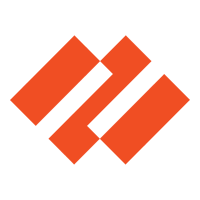
network security
Explore the top SASE providers to discover which is best for your organization when establishing secure, remote connections to your network.
Secure Access Service Edge (SASE) is a security architecture that addresses the challenges of cloud computing, remote work, and cyberthreats. It improves security by adopting the zero-trust model, simplifies IT management by eliminating the need for on-premises hardware and complex infrastructure, and saves money by reducing the costs of traditional security solutions.
Here are our recommendations for the best SASE providers for 2023:
This comparison table displays today’s most trusted SASE vendors, providing an overview of their network speed, ease of management and installation, and their primary use cases.
| SASE vendor | Network speed (Latency) | Best for (Primary use case) | Ease of use (Management/setup) |
|---|---|---|---|
| Zscaler Zero Trust Exchange | Intermittent Latency | Zero trust security | Moderate management, challenging setup |
| Citrix Secure Access Service Edge (SASE) | Intermittent Latency | Unified gateway | Moderate management, challenging setup |
| Prisma SASE | Minimal Latency | Integration with Palo Alto Networks | User-friendly, challenging setup |
| Skyhigh Security Service Edge | Minimal Latency | Secure web and cloud usage and threat detection and mitigation | Moderate management, complex setup |
| Cisco SASE Architecture | Occasional Latency | Integration with Cisco security products | Moderate management, complex setup |
| FortiSASE Solution | Minimal Latency | Comprehensive security integration | User-friendly, simple setup |
| Forcepoint ONE | Minimal Latency | Modular SASE deployment | Moderate management, complex setup |
| Barracuda SecureEdge | Occasional Latency | Cloud-native SASE platforms | Moderate management, challenging setup |
Jump to:

Best for zero-trust security
The Zscaler Zero Trust Exchange platform is a versatile and expandable solution that includes a variety of Zscaler products. You can configure these products to meet the unique needs of your organization and choose the most appropriate products and features for your security and business objectives.
The platform typically includes these components for cloud-native application protection and inline security:

| Pros | Cons |
|---|---|
| Native, multi-tenant cloud architecture that scales dynamically with demand. | Unable to intercept custom ports, requiring users to purchase separate additional physical devices. |
| Proxy-based architecture for full inspection of encrypted traffic at scale. | Does not provide granular controls over policy. |
| Security and policy brought close to users to eliminate unnecessary backhauling. | Reports of high latency. |
| ZTNA restricts access for native application segmentation. | Unclear pricing. |
Zscaler does not display full pricing details on its website. However, it has a list of plans and packages. It offers three bundles called Zscaler for Users Editions:
These packages include Zscaler Internet Access (ZIA), Zscaler Private Access (ZPA), and Zscaler Digital Experience (ZDX) so you can enjoy the full capabilities of the Zscaler Zero Trust Exchange.
For actual pricing information, get in touch with Zscaler’s sales department.

Best for a unified gateway
Citrix Secure Access Service Edge (SASE) is a one-stop solution that combines SD-WAN, zero trust access, and other security features from the cloud. It makes remote access to applications and the internet easier, which reduces the complexity of IT management. The solution includes different Citrix products, such as:

| Pros | Cons |
|---|---|
| Automatically updates with the latest threat information. | Reports of slow performance and high latency. |
| Offers flexible policies for granular control over access and usage. | Slow response times from customer support. |
| Applies security dynamically based on the role of the entity trying to gain network access. | Confusing interface for some users. |
| Clear pricing. | Complex initial setup. |
Out of all the SASE providers we evaluated, only Citrix has clear pricing. It gives two options, Citrix Secure Private Access Standard and Citrix Secure Private Access Advanced.
| Citrix Secure Private Access Standard | Citrix Secure Private Access Advanced |
|---|---|
| $3 per user, per month | $7 per user, per month |
| Includes SSO to SaaS and web applications with multi-factor authentication, helping to reduce the odds of account compromise by 99.9%. | Intelligently applies watermarking, clipboard access, download restrictions, and site navigation controls with adaptive access based on user location, device posture, and risk scores. Includes advanced multi-factor authentication natively with Citrix cloud for all non-virtual applications, as well as ZTNA access to TCP and UDP-based apps. |

Best for integration with Palo Alto Networks
Prisma SASE from Palo Alto Networks is an AI-powered solution that integrates network security, SD-WAN, and Autonomous Digital Experience Management (ADEM) into one cloud-based service.
This SASE provider secures all applications your hybrid workforce utilizes, no matter where they are. Zero trust network access (ZTNA) 2.0 offers top-tier protection for all application traffic, guaranteeing access and data security and greatly diminishing the risk of data breaches.
Prisma SASE primarily includes the following products:
In addition to these, the platform incorporates advanced functionalities in areas like ZTNA, cloud secure web gateway (SWG), cloud access security broker (CASB), and Firewall as a Service (FWaaS) to bring a comprehensive SASE solution.

| Pros | Cons |
|---|---|
| AI and ML capabilities accelerate anomaly detection. | Complex setup. |
| Offers centralized control through a single interface. | Excessive updates are difficult for some administrators. |
| Utilizes advanced and AI-automated SD-WAN. | Lack of documentation for integration with certain SD-WAN providers, such as Versa Network. |
| User-friendly interface. | Unclear pricing. |
Prisma SASE offers three editions for Prisma Access, namely Business, Business Premium, and Enterprise. It offers a free trial only for Prisma SD-WAN.
Like most vendors, Prisma SASE does not disclose exact pricing on its website. Contact their sales team for more pricing information.

Best for data-centric organizations
Skyhigh Security Service Edge (SSE), originally a part of McAfee’s cloud security unit, equips your workforce with tools and safeguards your data across the web, cloud, email, and private applications. This solution implements data and threat protection at every control point, aiming to lower the cost of security and simplify your management through a single integrated platform.
Skyhigh SSE delivers real-time data and threat protection against advanced and cloud-enabled threats, ensuring the safety of data across all vectors and users. The platform comprises several Skyhigh products.

| Pros | Cons |
|---|---|
| Scans up to six billion cells within six hours, which is significantly faster than anything on the market. | Dramatically increases network usage, requiring a robust internet provider to support the load. |
| Minimizes inefficient traffic backhauling with intelligent, secure direct-to-cloud access, delivering 99.999% availability and ultra-low latency. | Occasionally generates false positives and blocks legitimate websites or applications. This requires manual intervention to correct. |
| Protects workloads and cloud security posture management with application and risk context from a single platform. | Complex setup and management. |
| Provides full-scope data protection for the workforce and eliminates data visibility gaps. | Unclear pricing. |
Skyhigh Security doesn’t publish pricing details on its official page. Connect with their advisor for a quote.

Best for integration with Cisco security products
Cisco’s SASE framework provides network and security services that work seamlessly together. It employs cloud-based security services, such as SWGs, CASBs, FWaaS, and ZTNA along with VPN, DNS-layer security, and SD-WAN features.
Some of the solutions that Cisco offers under its SASE architecture are:

| Pros | Cons |
|---|---|
| Gives end-to-end visibility and industry-leading threat protection. | Integration with third-party tools is cumbersome. |
| Solid networking expertise from Cisco. | SSL decryption feature slows down performance. |
| Brings detailed insights into network status and user activity through Cisco Umbrella Secure Internet Gateway (SIG). | Occasionally fails to sync policies. |
| Unifies security and operational policy management. | Lack of transparent pricing. |
Cisco doesn’t disclose pricing details on its website. Please reach out to their sales team through chat or call.
It does ofer free trials with varying durations for its SASE products:

Best for comprehensive security integration
FortiSASE delivers easy and flexible security for remote workers with different devices and locations. Powered by FortiOS and FortiGuard AI, this SASE solution comes with advanced security features and threat intelligence.
FortiSASE combines cloud-based SD-WAN and SSE to connect and protect users from the network edge to anywhere. It promotes a single-vendor SASE approach that unites networking and security and supports secure access to the web, cloud, and applications. FortiSASE includes the following components that run on one OS and are manageable using a single console:

| Pros | Cons |
|---|---|
| Complete security suite. | High bandwidth consumption. |
| Enhanced efficiency from integrated AI and ML across the platform. | Limited availability of PoPs in some regions, impacting performance. |
| Detailed control options, promoting precise management. | Requires users to have existing Fortinet solutions for complete visibility. |
| In-depth analytics and auto-generated reports. | Unclear pricing. |
FortiSASE empowers users to choose from various options and mix and match them to meet their specific needs. It offers three package options in its Ordering Guide:
Contact Fortinet sales to have a sales expert contact you with clear pricing information.

Best for modular SASE deployments
Forcepoint ONE is an all-in-one cloud platform that makes security simple by getting rid of fragmented products. It promotes quick zero trust and security service edge (SSE) adoption by combining key security services, including SWG, CASB, and ZTNA. This solution enables organizations to gain visibility, control access, and protect data on managed and unmanaged apps and all devices, from one set of security policies.
One of the strengths of Forcepoint ONE is its modular approach to SASE. It provides a single, unified platform that facilitates the management of one set of policies across all apps, from one console through one endpoint agent. It protects access and data by combining:

| Pros | Cons |
|---|---|
| Protects against advanced threats and data loss on the web and in the cloud. | Third-party integration may result in conflicts affecting performance. |
| Simplifies deployments by consolidating various modules into a single client/agent. | Delayed support for new macOS releases. |
| Granular capabilities for robust security management aligned with business needs. | Policy changes can take over 20 minutes to apply. |
| Prioritizes data protection regardless of location or access method. | Unclear pricing. |
Forcepoint One has four pricing editions:
However, pricing details on these editions are unavailable. Reach out to Forcepoint’s sales department to request more information.

Best for cloud-native SASE platforms
Businesses can control data access from any device, anytime, anywhere with Barracuda SecureEdge. This SASE solution delivers enterprise-grade security, including ZTNA, FWaaS, web security, and fully integrated office connectivity with secure SD-WAN. It also allows security inspection and policy enforcement in the cloud, at the branch, or on the device.
The platform streamlines deployment by consolidating security management and operations reporting through cloud-hosted control software. Its automated SD-WAN capabilities further boost efficiency by performing self-healing, application-based routing, and adaptive session balancing based on traffic intelligence.

| Pros | Cons |
|---|---|
| Self-healing traffic intelligence detects the health of uplinks and encrypted tunnels across SD-WAN sites for adaptive optimization. | Processing data in the cloud with Barracuda SecureEdge can sometimes take longer than expected. |
| Improved network performance and uptime from application-based routing and adaptive session balancing. | Complex setup. |
| High level of control and visibility into user-generated traffic at each endpoint. | SSL offloading occasionally slows down traffic. |
| Zero-touch management allows MSPs to deploy and manage Barracuda SecureEdge devices without any onsite visits. | Unclear pricing. |
Barracuda offers a full-featured 30-day free trial of its Barracuda SecureEdge solution.
In addition, this vendor has a Build and Price page on its website showing the factors affecting Barracuda SecureEdge pricing. These factors include the specific capabilities you are looking for, the number of your offices and remote users, your organization’s public cloud offering, as well as the level of support you require. For completed pricing information, contact Barracuda’s sales team.
A complete SASE solution must encompass vital features to protect against evolving threats while enabling seamless access to network resources for remote and branch users. These key features include a zero-trust security model, cloud-native architecture, integrated networking and security, optimized network performance, and scalability.
SASE solutions need zero trust because threats can come from anywhere, even inside the network. ZTNA verifies and authenticates users and devices constantly, no matter where they are. This lowers the risk of unauthorized access and data breaches.
Modern networks require a cloud-native architecture for scalability and flexibility. It lets organizations adapt to changing business needs, scale services as needed, and cut infrastructure costs by removing on-premises hardware.
Networking and security services must integrate for efficient traffic routing and real-time threat detection and response. A single SASE solution combines these functions, simplifies network management, and applies consistent security policies across the network.
Optimized network performance, with low latency, redundancy, and high uptime, is key for a seamless user experience. Low latency minimizes data transmission delay, redundancy reduces network failures, and high uptime facilitates continuous access to critical resources.
Scalability is imperative for SASE solutions because it ensures that as organizations evolve and expand, the network infrastructure can readily accommodate increased user numbers, devices, and data traffic without requiring constant and costly adjustments, thus supporting long-term flexibility and cost-efficiency.
We actively sought out and ranked the top SASE vendors for 2023. To do this, we split our analysis into seven categories: cost, features, customer support, ease of use, integrations, scalability, and network performance. We then broke down each of these categories into more specific criteria tailored to the specific requirements and preferences of a reliable SASE solution.
We analyzed each software’s ability to meet the criteria in each category and gave them scores. Then, we added up the scores for each solution.
We evaluated the cost based on the availability and duration of a free trial, as well as pricing transparency.
Pricing transparency is an indispensable part of our evaluation because it allows customers to make informed decisions about whether the SASE solution fits their budget and needs. Unfortunately, only one provider, Citrix, provides pricing details to the public.
We measured the performance of each SASE solution’s core features to get reliable scores. These features include firewalls, intrusion detection and prevention, data encryption, identity and access management, threat intelligence, policy enforcement, compliance support, and auditing and reporting.
Several factors affect customer support scores, including the availability and quality of different support channels such as live chat, 24/7 phone assistance for all users, and a responsive email support team.
Additionally, we considered the presence of active user communities and the availability of in-depth documentation in our assessment.
In order to evaluate the ease of use of the SASE solutions, we analyzed user feedback on multiple independent review platforms. This analysis helped us gauge how easy it is for users with varying levels of technical expertise to set up and manage each solution.
To measure integration capabilities, we quantified the number of relevant third-party systems each SASE solution connects with. We included third-party systems like cloud security platforms, firewalls, IAM tools, SWGs, SD-WAN solutions, and endpoint security platforms, signifying flexibility.
Moreover, we evaluated each solution’s adaptability for custom integrations, ensuring users have the freedom to add configured connections as required.
We determined the scalability of each solution by analyzing its capacity to handle increasing user numbers and network traffic without a decrease in performance. We also gathered real-world data from several users about the SASE solution’s performance in numerous environments to validate vendor scalability claims and benchmark expectations.
To assess network performance we focused on checking metrics such as speed, reliability, latency, uptime, redundancy, failover, and throughput.
Furthermore, we considered user feedback and real-world data to collect insights into practical network performance.
SASE solutions are a valuable tool for many different types of organizations. Here’s who might find it especially useful:
Yes, SASE can replace virtual private networks (VPNs) for secure network access because it covers a broader range of security features compared to traditional VPNs.
SASE and software-defined wide area network (SD-WAN) are network technologies serving various primary purposes. Here’s a closer look at the distinctions between them:
| SASE | SD-WAN | |
|---|---|---|
| Utility | Integrates networking and extensive security services in a cloud-native architecture. | Primarily optimizes networking and bandwidth efficiency. |
| Security | All SASE solutions combine network optimization with cloud-based security services. | Some SD-WAN solutions may include security, but not all. |
| Deployment | Exclusively cloud-based deployment. | Offered in physical and cloud-native forms. |
| Traffic management | Examines traffic meticulously, providing an overall solution. | Addresses traffic functions one at a time, case by case. |
In the era of remote work and edge computing, SASE has become more important than ever because it caters to the needs of a dispersed workforce and provides a cloud-native way to secure the WAN.
Selecting the right SASE provider is equally crucial. The vendor’s expertise is of utmost importance as you will entrust them with safeguarding your network and data.
Consider scalability, network stability, and security in choosing the best SASE vendor for your needs. A well-chosen provider can significantly bolster your organization’s security posture and operational efficiency.
SD-WAN, the key component that powers every SASE solution, is essential for managing and controlling network connectivity. Discover the top SD-WAN vendors and identify the best choices for your needs.
Liz Laurente-Ticong is a tech specialist and multi-niche writer with a decade of experience covering software and technology topics and news. Her work has appeared in TechnologyAdvice.com as well as ghostwritten for a variety of international clients. When not writing, you can find Liz reading and watching historical and investigative documentaries. She is based in the Philippines.

Enterprise Networking Planet aims to educate and assist IT administrators in building strong network infrastructures for their enterprise companies. Enterprise Networking Planet contributors write about relevant and useful topics on the cutting edge of enterprise networking based on years of personal experience in the field.
Property of TechnologyAdvice. © 2025 TechnologyAdvice. All Rights Reserved
Advertiser Disclosure: Some of the products that appear on this site are from companies from which TechnologyAdvice receives compensation. This compensation may impact how and where products appear on this site including, for example, the order in which they appear. TechnologyAdvice does not include all companies or all types of products available in the marketplace.